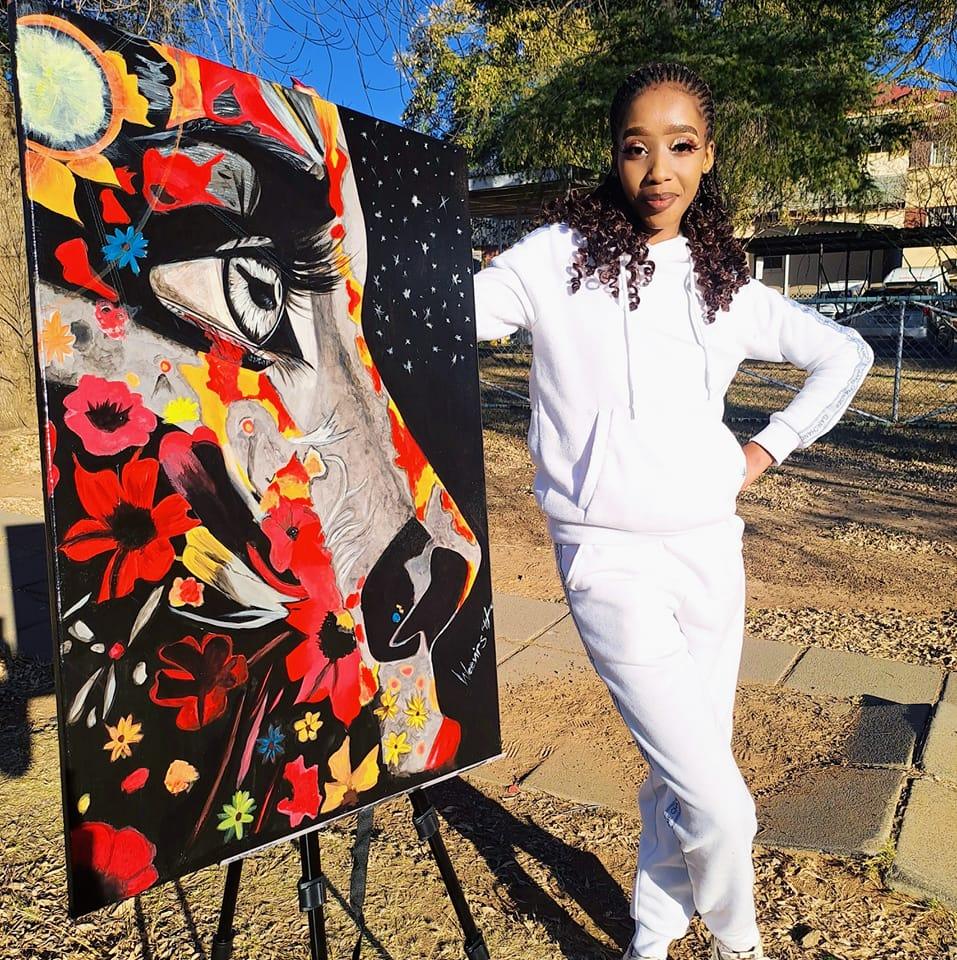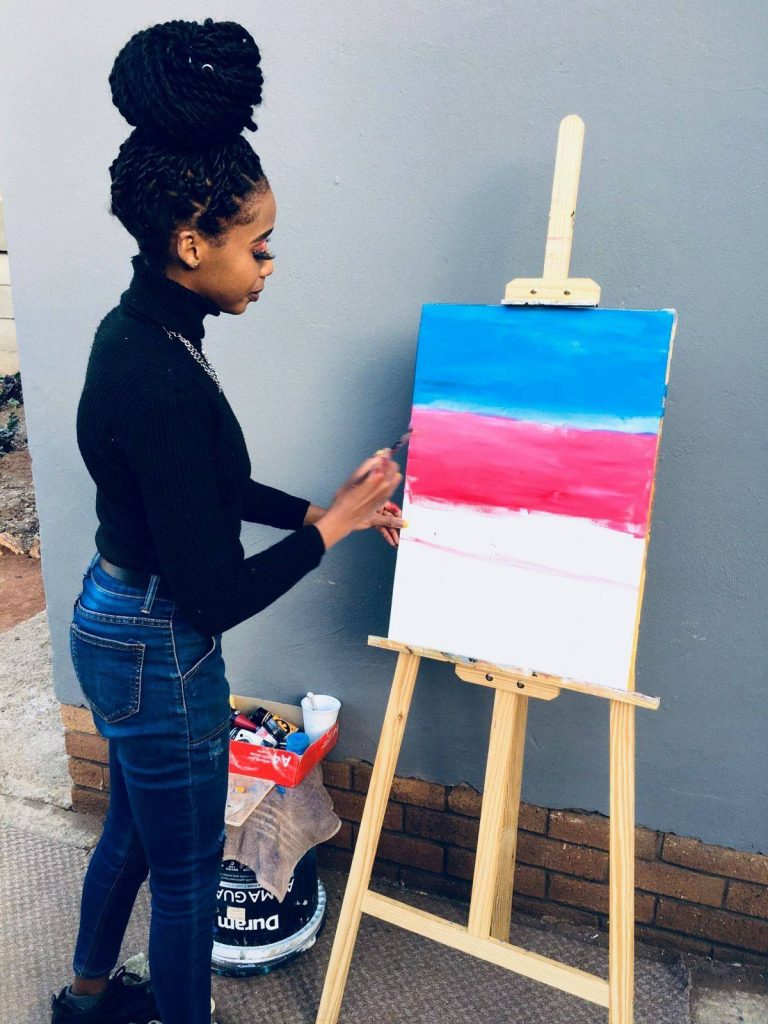Visual art is a great way to preserve the cultural identities of different communities. It can also be used to communicate ideas and values, which is especially important when it comes to preserving history and telling stories about your people.
South African-based international visual artist is playing a major role within her community, Rethabile Thabiey Weevirs had a conversation with My Africa Magazine journalist, Tapiwanashe Rubaya as she shared her story about how her journey started as a visual artist and how her work is changing her community.
TR: You are changing the lives of many within your community can you tell us about your journey in the arts industry?
RW: I started my artist journey in the year 2020 where I primarily use charcoal pencils, chalk pastels, acrylic, and oil paints on paper and canvas. My artistic style is a unique blend of figuration, abstraction, and modernism. I create works that are deeply personal and expressive often exploring themes of feminism, life experiences, feelings, and emotions.
My artistic journey has been truly remarkable. I’ve had the privilege of connecting with dedicated individuals who have inspired me to reach greater heights and imparted valuable insights into the art industry.
Additionally, I had the opportunity to travel to various provinces within South Africa, where I encountered talented artists employing diverse styles and techniques, providing me with invaluable learning experiences.



TR: What should be done for our visual arts industry to be well recognized within the arts sector?
RW: The Art and Culture departments, along with Arts sponsors, should initiate programs facilitating international group and solo exhibitions for African artists, enhancing their recognition on a global scale beyond the borders of Africa.
TR: You are a teacher by profession and you work with young artists. Isn’t it one of the most difficult careers?
RW: Facilitating art lessons with children has proven to be more manageable than anticipated. Prior to each session, I provide clear instructions outlining expectations and unacceptable behavior. I consistently reinforce positive conduct, and I reward their efforts with refreshments after each lesson. This approach motivates them to engage in creative activities, bringing me satisfaction in fostering their enthusiasm for art.
TR: Why is visual art important in our environment?
RW: Visual Arts plays a crucial role in our environment by unlocking creativity. It extends beyond the creations of great artists to impact lives and alter perspectives. Through mediums like painting, drawing, photography, and sculpture, visual arts provide avenues to explore emotions and can be interpreted in diverse ways based on the viewer.
TR: Which exhibitions across Mzansi have you showcased your work at?
RW: I’ve taken part in various group exhibitions, such as the “Art Attack” exhibition organized by the Klerksdorp Museum and B Gallery in Klerksdorp in 2021. Additionally, I showcased my artwork at the North West University Botanical Gardens Gallery from March to July 2023. In October, I held an exhibition at the MTN Innovation Centre Phase 2 in Fairlands, Johannesburg, which will be open until November 30th.
TR: What has been the response from your community about your work?
RW: I’ve been fortunate to receive significant love, support, and appreciation from my community. They take pride in my efforts for both personal growth and the well-being of children, expressing heartfelt wishes for my continued prosperity.
TR: Back to the painting what has been the most expensive product of your work you have made and can you tell us what inspired the painting of the product?


RW: The most expensive painting of mine is the one titled: Mother Earth’s Eye. The story behind the artwork is “Mother Earth started as this round ball. As years went by, continentaldriftstartedtohappen causing the continents to drift and move away from one another. This separation caused these separated continents to be independent, which is what is happening in today’s world. The drift was an emotion to Mother Earth that led her to confusion because this was unfamiliar to her.
The drift really overwhelmed her, so these emotions were expressed through the eye which is known as the window to the soul.
TR: Share with us more details about your current project.
RW: I’m currently expanding my art lessons project to two additional locations to accommodate the growing interest of kids in different areas, as I currently have two groups from distinct places.
TR: Word of advice to young women in Africa who want to venture into the visual arts industry.
RW: For young women aspiring to enter the Visual Industry in Africa, my advice is to believe in and have confidence in your work or craft. Establish a positive environment, cultivate a strong network within the industry, as it is crucial, and always trust in your creativity without self-doubt.
Facebook: Rethabile Thabiey Weevirs
Instagram: art_by_retha_weevirs


